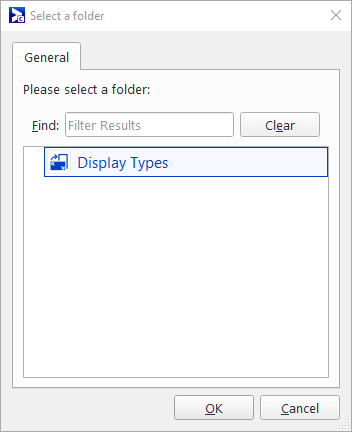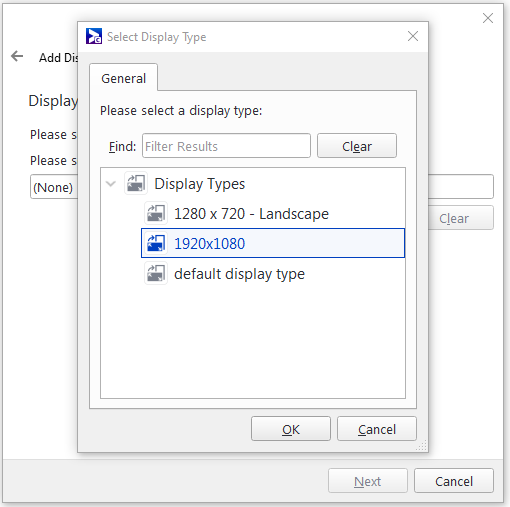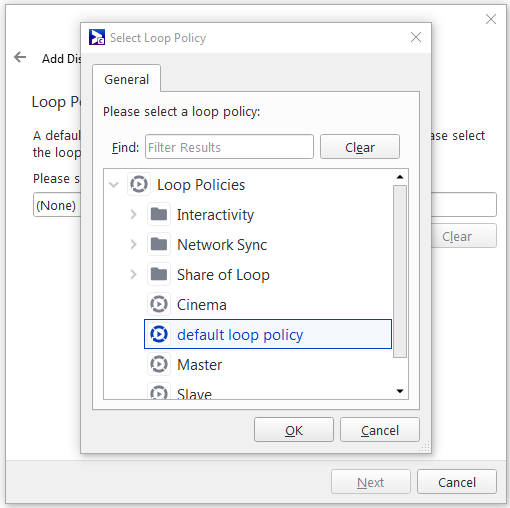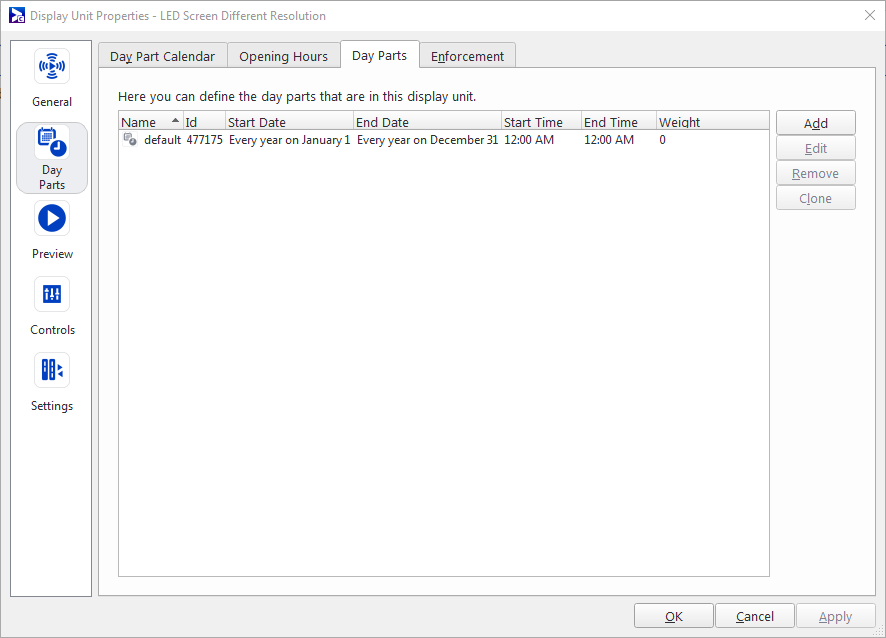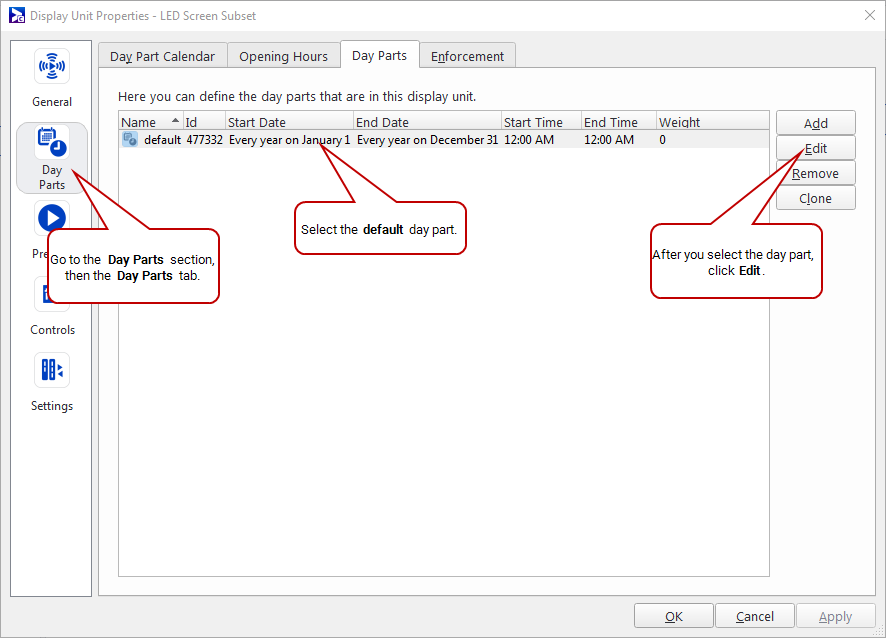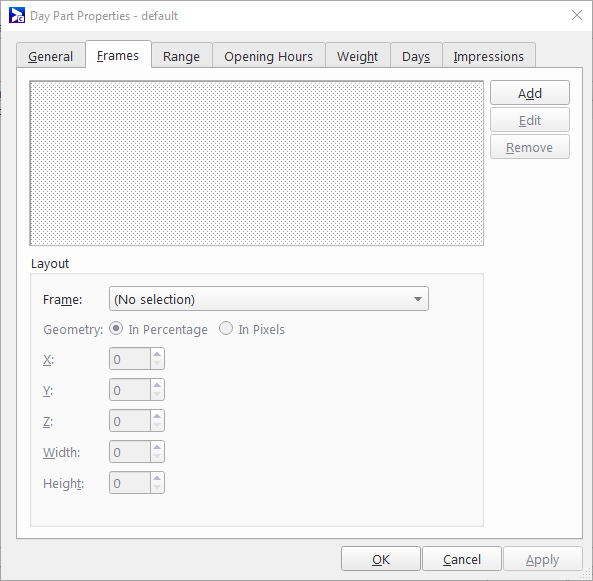This tutorial describes the setup to display a subset of your video content on a subset of the LED screen, where the LED screen does not have the same aspect ratio as your player or Operating System resolution.
This tutorial and LED Screens - Different Aspect Ratios (Frame and Player Setup) will result in the same output. However, we recommend the current tutorial for the following reasons:
- It uses frames, as opposed to custom geometry for LED Screens - Different Aspect Ratios (Frame and Player Setup)
- It is easier to set up and maintain, because the custom geometry tutorial needs different player configurations for every different resolution
If you want a subset of the player output to play on the screen, you must perform a specific configuration in Broadsign Control Administrator.
Example: Let's say that your video content is originally 1920x1080, but you only want to display the upper left part of your video for a resolution of 300x200.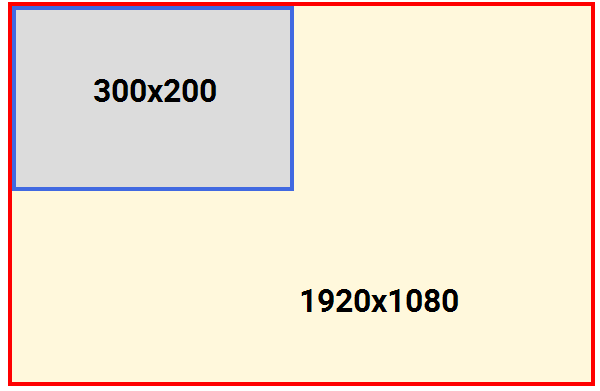
Prerequisites
Before configuring this feature, ensure that you are familiar with the following:
Workflow
In general, the workflow to configure for LED screen with different resolutions is:
- Add a Display Type
- Add a Display Unit
- Configure a Frame
- Book a campaign
Display types profile the display characteristics of the screen hardware in use on the network. When you create a display unit, you must assign a display type to it. The display type indicates the display resolution used by the hardware, as well as its orientation.
For more details about display types, see Display Types.
To add a display type:
- From among the Resource Tabs on the left, select Display Types.
- In the Network Setup ribbon, click on the Display Type icon.
- In the Select a Folder dialogue box, select Display Types.
- Click OK.
- Enter a descriptive name for the display type.
- Click Next.
- On the Specify Resolution page, enter the following information:
- Width – 1920
- Height – 1080
- Click Finish.
The Add Display Type Wizard opens.
We recommend giving the display type a name that describes its dimensions. In this example, we will call the display type "1920×1080".
Now that we have a display type, we will add a display unit.
For our example, we will need one display unit that uses the Display Type that we have created.
Note: This step describes how to create a new display unit. If you want to set up LED screen on an existing display unit, you must assign the Display Type to it. Assigning display types can be done in the Display Type tab of the Settings section in the Display Unit Properties. For more information, see Display Units.
To create a display unit:
- To keep things organized, for this tutorial we recommend you create a display unit folder called "LED Screens".
- In the LED Screens folder, create the display unit. Enter the following information:
- Welcome – Enter the name "LED Screen Different Resolution".
- Display Type – Select the Display Type created in Step 1 – Add a Display Type.
- Loop Policy – The loop policy is unimportant for LED Screen configuration, so select any loop policy that you want to use, or select the default loop policy.
- Open the Display Unit Properties, and go to General > Players.
-
Click Add, and select the player that you will use to display your content.
For our example, we will need to configure the display unit created in Step 2 – Add a Display Unit to use a frame of 300x200, representing the subset of the video content that you want to display.
To configure the frame:
- Open the Display Unit Properties of your display unit, and go to Day Parts > Day Parts.
- Select the default day part, and then click Edit.
- The Day Part Properties dialogue box opens. Go to the Frames tab.
- Select the default "Fullscreen" frame, and click Edit.
- General tab – Change the name from "Fullscreen" to "Subset".
- Policy tab – The loop policy is unimportant for LED Screen configuration, so select any loop policy that you want to use, or select the default loop policy.
- Click OK.
- Under Layout, set the following:
- Geometry – "In Pixels"
- Width – "300"
- Height – "200"
- Click OK.
A default day part is listed in the field.
This step describes how to book a single campaign to be displayed on a LED screen.
To book a campaign:
- Add a campaign. Pay special attention to the following pages in the Add Campaign Wizard:
- Welcome – Name the campaign "LED Screen".
- Display Unit Targeting – Select the Display Unit to book your campaign to it (see Step 2 – Add a Display Unit).
- Ad Copy Selection – Select the ad copy to assign it to the campaign. Ad copy duration is unimportant for LED Screen configuration.
Finished! You have now set up a subset LED screen playback with different aspect ratios.


